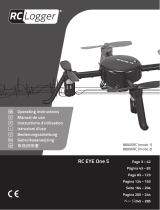
Zu Ihrer Sicherheit, der Sicherheit anderer und
um Schäden am Gerät oder Ihrem Fahrzeug zu
vermeiden, lesen Sie die Sicherheitshinweise in
dieser Anleitung sorgfältig durch und stellen Sie
sicher, dass Sie sie vollständig verstanden haben.
Sie müssen das Wartungshandbuch des Fahrzeugs
Batterieherstellers lesen und die angegebenen
Vorsichtsmaßnahmen oder Anweisungen vor
und während eines Test- oder Wartungsvorgangs
beachten.
FÜHREN SIE TESTS NUR IN EINEM GUT BELÜFTETEN
BEREICH DURCH, da das Fahrzeug Kohlenmonoxid
(ein giftiges, giftiges Gas) und Feinstaub erzeugt,
wenn der Motor läuft.
ACHTEN SIE IMMER AUF BEWEGLICHE TEILE
(einschließlich, aber nicht beschränkt auf
Kühlmittelgebläse, Riemenscheiben und Riemen),
da sie sich drehen oder mit hoher Geschwindigkeit
drehen, wenn der Motor läuft.
BERÜHREN SIE HEISSE MOTORTEILE NICHT Die
Motorteile können bei laufendem Motor extrem
heiß werden, das Berühren heißer Teile kann zu
Verbrennungen führen.
SCHALTEN SIE DIE ZÜNDUNG AUS, BEVOR SIE
DAS WERKZEUG AN DIE BATTERIE ANSCHLIESSEN
ODER TRENNEN, um Schäden am Tester oder den
elektronischen Komponenten des Fahrzeugs zu
vermeiden.
RAUCHEN SIE NICHT IN DER NÄHE DES FAHRZEUGS,
wenn der Batterietest läuft. Kraftstoff- und
Batteriedämpfe sind leicht entzündlich.
TRAGEN SIE IMMER ZUGELASSENEN AUGENSCHUTZ,
um Schäden durch scharfe Gegenstände und
ätzende Flüssigkeiten zu vermeiden.
SICHERHEIT STEHT IMMER
AN ERSTER STELLE!
LESEN SIE VOR DEM GEBRAUCH DIE
ANLEITUNG
TRAGEN SIE BEI ARBEITEN AN EINEM MOTOR
KEINE WEITE KLEIDUNG ODER SCHMUCK. Lockere
Kleidung kann sich leicht in Lüfter, Riemenscheiben,
Riemen usw. des Motors verfangen, und Schmuck ist
hochgradig leitfähig, was bei Kontakt mit Elektrizität
schwere Verbrennungen oder Stromschläge
verursachen kann.
SCHNEIDEN SIE DIE KABEL NICHT DURCH UND
TAUCHEN SIE SIE NICHT IN WASSER. Dieses Produkt
ist ein elektrisches Gerät, das einen elektrischen
Schlag und schwere Verbrennungen verursachen
kann.
WARNUNG: Batteriesäure ist extrem ätzend. Falls
Säure in Ihre Augen gelangt, SPÜLEN SIE DIE AUGEN
GRÜNDLICH FÜR MINDESTENS 20 MINUTEN MIT
KALTEM WASSER AUS UND SUCHEN SIE SOFORT
EINEN ARZT AUF. Wenn Batteriesäure mit Ihrer Haut
oder Kleidung in Kontakt kommt, WASCHEN SIE
SIE SOFORT MIT EINER LÖSUNG AUS WASSER UND
BACKSODA.
DE I 27DE I 26



























